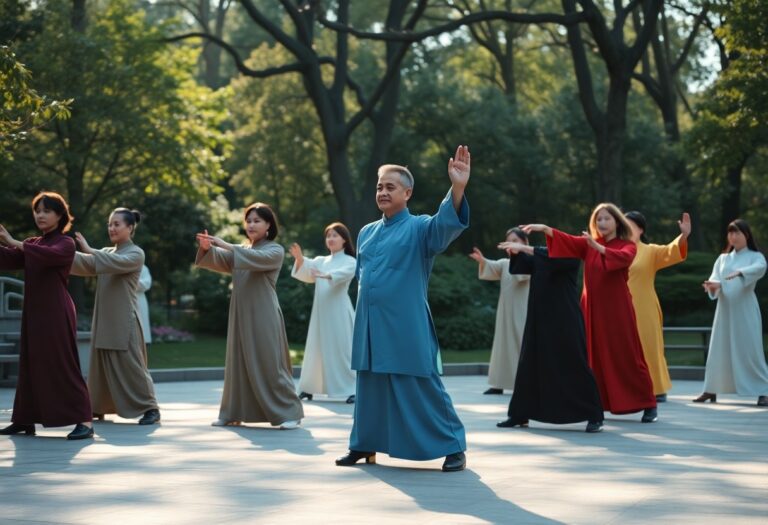Nuwa: Understanding the Myth and Its Modern Representations
In the rich tapestry of Chinese mythology, few figures stand as prominently as Nüwa (女媧). This creation goddess embodies the essence of femininity and life, serving as a maternal deity revered throughout ancient and modern Chinese culture, much like the tales found in the Huainanzi. Often depicted with a human head and a serpent-like body, Nüwa's narratives weave together themes of creation, protection, and the nurturing aspects of nature. The following sections delve into who Nüwa is, the origins of her myth, and her pivotal role in the broader context of Chinese mythology, revealing her significance and the enduring legacy she holds in traditional Chinese beliefs.
Introduction to Nuwa
Who is Nuwa?
Nüwa is a significant figure in Chinese mythology, recognized as a creation goddess and a maternal deity, often associated with the five colored stones used in her legendary repairs. She is often depicted as a being with a human head and a serpent-like body, embodying both femininity and the ability to create life. Nüwa is credited with the creation of humanity, having shaped the first humans from yellow clay. In various narratives, she is also associated with marriage and fertility, often prayed to by women seeking divine assistance in these matters. Her role in mythology reflects the ancient Chinese matriarchal society, where childbirth was viewed as a miraculous event, much like the legendary marital affairs of the gods. Nüwa's importance is further emphasized by her connection to various myths, including those involving her husband and brother, Fuxi (伏羲), who is also a prominent deity within the same mythological framework.
The Origins of the Nuwa Myth
The myth of Nüwa has its roots in ancient Chinese beliefs and is thought to reflect the cultural values of a matriarchal society, often intertwined with the stories of the five emperors. The earliest references to Nüwa can be traced back to texts like the *Liezi* (列子) and the *Classic of Mountains and Seas* (山海經), where she is depicted as a creator and a protector of humanity. The character of Nüwa evolved over time, with her narratives often intertwined with those of other deities like Fuxi. In these myths, she is portrayed not only as a creator but also as a figure who intervenes during times of chaos, such as mending the heavens after a great flood caused by a battle between gods, notably involving Gonggong. This dual role of creation and restoration solidifies her status as a central figure in Chinese mythology, resonating through the ages.
Nuwa's Role in Chinese Mythology
Nüwa is a pivotal character in Chinese mythology, often regarded as a mother goddess. She is credited with the creation of humanity, having shaped the first humans from yellow clay, and is linked to various creation myths from the Huainanzi that explore themes of procreation and survival. In addition to her role as a creator, Nüwa is also known for her act of mending the heavens after a catastrophic event, which further underscores her protective nature. The stories surrounding her highlight her importance in ancient Chinese culture, where she is revered as a symbol of fertility, motherhood, and the nurturing aspects of nature. Nüwa's narratives also reflect the societal values of ancient China, particularly during the Eastern Han Dynasty, emphasizing the significance of female deities in the creation and sustenance of life.
Nüwa and Fuxi: The Divine Siblings
Fuxi and Nüwa: Creation and Balance
Fuxi (伏羲) and Nüwa are often depicted as divine siblings in Chinese mythology, playing complementary roles in the creation and maintenance of humanity, emblematic of the husband and wife dynamic. Together, they are considered the ancestors of the Chinese people, with Fuxi credited with teaching essential skills such as hunting, cooking, and writing. Their union symbolizes the balance of yin and yang, where Fuxi represents the masculine and Nüwa embodies the feminine. This duality is significant in Chinese cosmology, reflecting the harmony between male and female forces in nature. Their intertwined narratives emphasize the importance of cooperation and balance in the creation of a stable society. The tales surrounding Fuxi and Nüwa resonate with the ancient Chinese belief that understanding the balance of dual forces is crucial for societal harmony and longevity.
The Significance of Their Relationship
The relationship between Nüwa and Fuxi is deeply rooted in Chinese mythology, often interpreted as a representation of marital harmony and the foundation of human society. Their marriage is seen as a necessary step for the continuation of the human race, especially following the great flood that decimated humanity. This union is not only a personal bond but also a symbolic representation of the interconnectedness of all life. The stories of their relationship highlight themes of love, duty, and the necessity of collaboration in overcoming adversity, reinforcing the cultural values of familial loyalty and partnership. Nüwa's ability to bear children and Fuxi's skills in teaching essential life practices underscore their roles as pillars of society, ensuring that humanity flourishes amidst challenges.
Mythological Tales of Fuxi and Nüwa
Numerous myths recount the adventures and contributions of Fuxi and Nüwa, illustrating their roles as creators and protectors of humanity. One prominent tale describes how Nüwa crafted humans from clay, while another highlights their efforts in restoring order after a catastrophic flood. In some versions, they are depicted as having intertwined tails, symbolizing their deep connection and unity. Their stories often serve as moral lessons, emphasizing the importance of cooperation and the balance of forces in nature. These tales have been passed down through generations, solidifying their status as cultural icons in Chinese mythology. The narratives, including Nüwa's repair of the heavens with five-colored stones, reflect the enduring legacy of these divine siblings, teaching the values of resilience and unity in the face of adversity.
The Creation Myth of Nuwa
How Nuwa Created Humanity
The creation myth of Nüwa is a central narrative in Chinese mythology, detailing how she molded the first humans from yellow clay. Initially, Nüwa created figures by hand, but as her labor became tiresome, she resorted to using a rope to swing mud around, creating more humans in a less labor-intensive manner. This method of creation reflects the social hierarchy in ancient China, where those crafted by hand were seen as nobles, while those formed from the mud were considered commoners. This narrative serves as an aetiological explanation for social stratification, highlighting the cultural values surrounding creation and identity in ancient Chinese society. Nüwa's unique ability to create life emphasizes her role as a deity and her significance in the lives of the early Chinese people.
The Symbolism of Clay in Creation
The use of clay in the creation of humanity by Nüwa carries significant symbolism in Chinese mythology, representing the foundational elements of life akin to the five colored stones. Clay represents the earth and fertility, embodying the nurturing aspects of nature. The act of molding clay into human figures signifies the intimate connection between the creator and her creations, emphasizing the idea of life being shaped by divine hands. Additionally, the differentiation between the handcrafted nobles and the mass-produced commoners reflects societal values regarding status and worth. This duality in creation underscores the complexity of human identity and the diverse experiences within society. In this context, Nüwa's actions not only illustrate her role as a creator but also reinforce the importance of understanding one's origins and place within the world, an idea that resonates through China's cultural legacy.
Nuwa's Intervention in the World
Nüwa's interventions in the world extend beyond creation; she is also known for her role in mending the heavens after a catastrophic event. When the sky was damaged due to the battle between gods, Nüwa took it upon herself to repair the heavens, using five-colored stones and the legs of a giant turtle to restore balance. This act of restoration not only saved humanity from further suffering but also solidified her role as a protector. Nüwa's actions reflect themes of sacrifice and resilience, portraying her as a compassionate deity who actively seeks to alleviate the hardships faced by her creations. The myth encapsulates her divine nature and highlights the interconnectedness of life, illustrating how one figure can embody both creation and restoration in the face of chaos and destruction.
Nüwa in Popular Culture
Nüwa in Literature and Art
Nüwa's influence extends into literature and art, where she is often depicted in various forms and narratives. Classic texts like the *Investiture of the Gods* and the *Dream of the Red Chamber* reference her creation myths and her role in mending the heavens. In visual art, she is frequently portrayed as a serpentine figure with a human head, symbolizing her dual nature. Many traditional artworks depict her during the act of repairing the sky, reflecting her significance in Chinese culture. Contemporary artists continue to draw inspiration from her myths, showcasing her in modern interpretations that highlight her enduring legacy. Nüwa is also represented in various mediums, including sculpture and digital art, where her symbolism of nurturing and resilience resonates deeply with contemporary audiences, reaffirming her status as a pivotal figure in both historical and modern contexts.
Film and Television Adaptations
Nüwa has been featured in various film and television adaptations, often portrayed as a powerful and benevolent figure. Her stories are adapted into animated series and films, where her role as a creator and protector resonates with audiences, much like the four pillars of creation in Chinese mythology. Productions like *The Monkey King* and various adaptations of Chinese folklore highlight her importance in the narrative, bringing her character to life for new generations. These adaptations often emphasize her strength and compassion, reinforcing her status as a revered goddess in Chinese mythology. In many adaptations, Nüwa is depicted as actively mending the heavens, showcasing her divine abilities. This portrayal not only serves to entertain but also educates viewers about her mythological significance, making her a relatable figure in today’s society, where themes of resilience and protection are increasingly valued.
Nüwa's Influence on Contemporary Media
In contemporary media, Nüwa's character continues to inspire a wide range of representations, from video games to literature. She appears in popular video game franchises such as *Shin Megami Tensei*, where her mythological origins are integrated into gameplay and storytelling. Additionally, Nüwa's themes of creation and restoration resonate with modern audiences, leading to her inclusion in various narratives that explore the complexities of identity and existence. As society evolves, Nüwa remains a symbol of resilience and nurturing, reflecting the enduring power of her myth in contemporary culture. Her presence in modern storytelling often emphasizes her as a pillar of strength, reminding audiences of the importance of feminine energies and the balance of creation and protection. This cultural relevance ensures that Nüwa's legacy is not only preserved but also celebrated in the ever-changing landscape of media.
Q: Who is Nüwa in Chinese mythology?
A: Nüwa is a prominent figure in Chinese mythology, often depicted as the goddess responsible for creating humans and repairing the sky after it was damaged. She is frequently associated with the creation story and is regarded as a protective figure for humanity.
Q: What is the significance of the hole in the sky in Nüwa's legend?
A: The hole in the sky represents the chaos and damage that Nüwa sought to mend. According to the myth, after Pangu created the world, a battle caused by King Zhou of Shang led to destruction, and Nüwa worked unceasingly to repair the damage by using five-colored stones to mend the heavens.
Q: How is Nüwa related to Fuxi?
A: Nüwa is often depicted as both the sister and the wife of Fuxi, another important figure in Chinese mythology. Together, they are sometimes shown in artworks, such as in the classic of mountains and seas, symbolizing harmony and balance in creation.
Q: What role do stones play in Nüwa's story?
A: Stones are central to Nüwa's efforts to repair the heavens. Specifically, she used five-colored stones to mend the holes in the sky caused by the chaos in the creation story, illustrating her resourcefulness and determination to restore order to the world.
Q: Can you tell me about the representation of Nüwa in modern culture?
A: Nüwa has been represented in various forms of modern media, including literature, films, and visual arts. Works like “Dream of the Red Chamber” and adaptations of the classic of mountains and seas have reimagined her character, showcasing her as a symbol of resilience and femininity.
Q: What is the connection between Nüwa and the Three August Ones?
A: The Three August Ones are significant figures in Chinese mythology, often associated with creation and civilization. Nüwa, as a creator goddess, complements their narratives, showcasing the interconnectedness of their roles in the mythological framework of ancient China.
Q: How does the story of Nüwa relate to the concept of life and ability?
A: Nüwa's narrative emphasizes the theme of life and the ability to create and sustain humanity. Her role as a creator and protector highlights the importance of nurturing life and addresses the challenges faced in maintaining the balance between chaos and order.
Q: What is the significance of Mount Bouzhou in Nüwa's mythology?
A: Mount Bouzhou is often referenced in Nüwa's myths as a sacred location associated with her divine activities, such as the creation of humans and the repairs made to the heavens. This mountain symbolizes the connection between the earth and the divine in Chinese cosmology.
Q: What does the term “figures from the yellow earth” signify in relation to Nüwa?
A: The term “figures from the yellow earth” refers to the clay figures that Nüwa is said to have created to populate the earth. This imagery is integral to her identity as a creator goddess, illustrating her role in shaping humanity from the earth itself.











